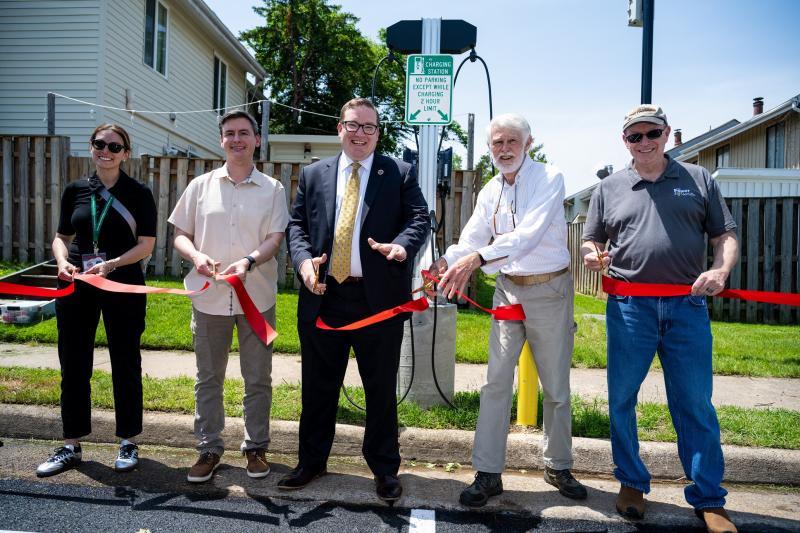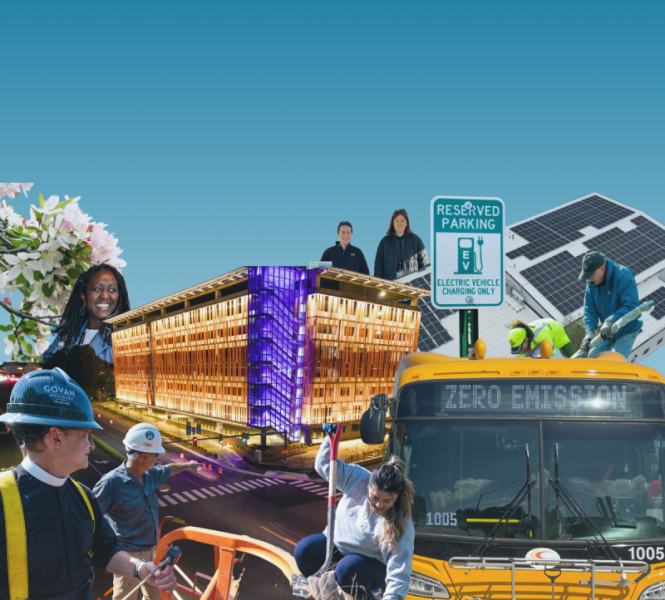Search Our Site
Join the Sustain Fairfax Challenge
Fairfax County is encouraging residents to take climate action into their own hands using BrightAction! This new climate engagement platform makes it simple, easy, and fun to learn about climate solutions and take action through an interactive dashboard. Sign up now to start reducing your environmental impact through progress tracking, daily reminders, and collaboration with friends, family, and colleagues!
Upcoming Events
There are currently no upcoming events to view
Latest News and Information

Fairfax County is now accepting nominations for the 2025 Environmental Excellence Awards, a prestigious award that recognizes exceptional commitment to environmental stewardship.
Each year the Environmental Excellence Awards honors those who have made significant contributions towards protecting, improving, and educating about the natural world in Fairfax County. The awards are open to individual residents, organizations, businesses, and county employees whose contributions include:
Advancing or supporting the county's environmental goals and policies
Dedicating personal time and expertise beyond their usual fiscal or civic responsibilities
Demonstrating leadership and serving as role models for others
Administered by the Environmental Quality Advisory Council (EQAC) on behalf of the Board of Supervisors, with support from the Office of Environmental and Energy Coordination, the awards aim to motivate and inspire continued dedication to environmental sustainability within the community.
To be eligible for the 2025 awards, nominees' achievements should be within the period from June 1, 2024, to May 31, 2025, or span multiple years that include a portion of this timeframe.
To submit a nomination, please complete the online form by August 8, 2025.
SUBMIT A NOMINATION
For more information about the awards and to view past winners, please visit the Environmental Excellence Awards page.

The Charge Up Fairfax program is now accepting applications on a rolling basis! The program is designed to help common-interest communities and other organizations install electric vehicle (EV) charging stations, improving local air quality and driving us toward a more sustainable future.
This year, the program has introduced three key changes:
Applications are now being accepted continuously, making it easier than ever to participate.
Reimbursement grant amounts have been increased, offering greater financial support for those looking to install EV charging stations.
Eligibility has expanded beyond homeowner and condo owner associations to include places of worship and other non-profit organizations, recognizing their critical role in providing EV charging access to staff and guests while attending services or events.
With these changes, more organizations can now benefit from technical and financial assistance to install EV charging stations.
“EVs have no tailpipe emissions which means cleaner air to breathe along roadways and in neighborhoods and fewer greenhouse gas emissions which cause climate change”, said John Morrill, director of the Office of Environmental and Energy Coordination. “By making EV charging more accessible, we are taking a significant step toward our goal for carbon neutrality by 2050 and for a healthier, more sustainable Fairfax for all.”
“We look forward to seeing more communities and organizations join us in this important effort."
Since the program's inception in 2023, 16 communities have participated in the program. Four communities have successfully completed their charging station installations, with the two most recent groups being:
Westwood Village Unit Owners Association, Vienna: Installed two dual-port chargers and are eligible to receive a $5,000 reimbursement.
Reflection Homes Association, Herndon: As the first community located in an equity-designated area, RHA received a $10,000 reimbursement to install a dual-port charging station.
Ribbon cutting at Reflection Homes Association's new dual-port charging station, installed with the support of Charge Up Fairfax
These installations mark significant milestones in the county's ongoing efforts to encourage EV adoption by expanding community EV charging infrastructure.
Michael H., president of Reflection Homes Association and an EV owner, said the funding and technical guidance provided by the program were key in convincing the board to consider installing EV chargers. He said the installation of chargers will help incentivize more residents of the neighborhood to consider buying an EV, which is good for the environment.
Penderbrook Community Association in Springfield District was another recent success story — installing 4 dual port chargers for their community of over 1,700 single family homes, townhouses and condos. Not only is it a significant benefit to the residents, but it is also an amenity for the guests who use the HOA’s golf course, said David Braun, president of the board of directors.
Braun said the Charge Up Fairfax program was particularly instrumental in helping the community navigate the regulatory process and coordinate with the various stakeholders.
“Having someone that could shepherd us through that was really important to us, and we felt like Fairfax County was a good partner,” Braun said.
Organizations interested in applying for the Charge Up Fairfax program can now do so. The program offers flexible options, including a grant-only program, a full-service program, and a combination with Dominion Energy’s Level 2 EV Charging Program, to suit the diverse needs of applicants.
Organizations that are accepted into the program will receive a site visit and assessment from an engineering firm, paid for by Fairfax County. If the organization decides to proceed with the purchase and installation of Level 2 electric vehicle charging stations, the organization will hire a contractor to perform the necessary permitting, electrical upgrades, installation of equipment and final inspection.
For more information about the Charge Up Fairfax program, application details, and to sign up for updates, please visit the website or email OEECElectricVehicles@fairfaxcounty.gov

Innovative Strategies and Community Engagement Drive Sustainability Successes
The Fairfax County Office of Environmental and Energy Coordination announced today the release of the 2024 Climate Action Progress and Highlights report, showcasing significant strides made in sustainability, energy efficiency, and climate resilience over the past year.
From reducing emissions and enhancing energy efficiency to expanding its renewable energy footprint, the report underscores the county's whole-of-government approach to creating a resilient, sustainable community for all.
Key Achievements Serving the Community in 2024:
Sustain Fairfax Campaign: Started the Sustain Fairfax public awareness campaign, to increase community engagement and participation in sustainability initiatives.
Green Business Partners Program: Expanded to 51 member organizations actively engaging in sustainable practices.
Flood Risk Reduction Services: Launched the Flood Mitigation Assistance Program (FMAP), providing reimbursements to property owners for flood-proofing practices.
Extreme Heat Services: Upgraded Cooling Centers, increasing their usage from 251 visits in 2023 to 1,301 visits in 2024.
Urban Design and Building Codes: Revising Urban Design Guidelines to incorporate climate-friendly features and enforced the updated Uniform State Building Code to improve energy efficiency and support renewable energy adoption.
Tree Planting Initiatives: Planted approximately 16,000 trees, including 287 at schools and government sites, focusing on urban heat islands and equity-driven site selection.
Key Milestones for County Operations in 2024:
Reduction in Greenhouse Gas Emissions: Overall emissions in county operations are down almost 28% compared to the fiscal year 2018 baseline.
Energy Efficiency Enhancements: Total electricity use in county operations has decreased by 15% since FY2018, a result of continuous upgrades of county facilities.
Solar Installations: 10 county buildings now have rooftop solar, with 10 more planned by the end of 2025.
Climate Resilient Design: Developed a Climate Resilient Design Checklist, piloted in the Embry Rucker Shelter and Willard-Sherwood Health and Community Center designs.
"Our progress in 2024 is a testament to our steadfast commitment to addressing climate change and building a resilient community,” said Chairman Jeffrey C. McKay. “Despite funding challenges and changes in federal policy, we are dedicated to continuing this momentum and leading by example to ensure a sustainable Fairfax County for generations to come."
The 2024 report tracks progress in implementing the county’s three climate and energy plans – the Community-wide Energy and Climate Action Plan (CECAP), the Operational Energy Strategy (OES), and Resilient Fairfax.
These plans set ambitious goals that include: lowering greenhouse gas emissions to achieve community-wide carbon neutrality by 2050; achieving carbon neutrality for government operations by 2040; and improving community resilience to the effects of climate change that are already occurring.
“Our collaborative efforts across all county agencies and with our community partners have enabled us to make significant impact,” said John Morrill, director of the Office of Environmental and Energy Coordination. “We look forward to building on these achievements and tackling the challenges ahead with innovative solutions and robust community engagement.”
In 2025, Fairfax County anticipates further advancements, including the launch of a “concierge” program to assist residents with home energy improvements and an AC Rescue program for extreme heat resiliency.
The report, as well as more of the data and information, is available on the Climate Action Dashboard — a single site for explaining and sharing progress with residents on the county’s climate action goals.
To learn more about the county’s climate policies, programs and progress, visit www.fairfaxcounty.gov/environment-energy-coordination.


